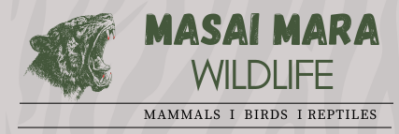Here is a detailed table based on key info about lions from the Animal Diversity Web and Animals of Serengeti, and from other sources:
Guide to Lions in Masai Mara
| Attribute | Details |
|---|---|
| Scientific Name | Panthera leo |
| Average Male Weight | 189 kg (heaviest recorded: 272 kg) |
| Average Female Weight | 126 kg |
| Male Length | 2.4 to 3.3 m |
| Female Length | 2.4 to 2.75 m |
| Tail Length | 0.6 to 1.0 m |
| Average Male Height | 1.2 m |
| Average Female Height | 1.1 m |
| Range Elevation | Up to 4,240 m (Bale Mountains, Ethiopia) |
| Diet | Carnivorous: primarily ungulates, including zebras and wildebeest |
| Gestation Period | 3.5 months (around 109 days) |
| Cubs Per Litter | 1 to 6 (average: 3) |
| Weaning Age | 7 to 10 months |
| Social Structure | Prides with up to 40 members; cooperative breeding by females |
| Sexual Maturity | Females: 4 years; Males: 5 years |
| Lifespan in the Wild | Males: up to 16 years; Females: up to 18 years |
| Home Range | 20 to 400 km², depending on prey density |
| Predators | Humans (poaching), spotted hyenas (for cubs) |
| Conservation Status | Vulnerable (IUCN Red List) |
| Major Threats | Poaching, habitat loss, human-wildlife conflict |
Population of Lions in Masai Mara
The Masai Mara Predator Conservation Programme offers vital insights into the lion population within the Masai Mara ecosystem. According to their 2020 data, lion abundance and density showed positive growth, with lion numbers increasing from 427 individuals in 2019 to 522 in 2020. The lion density similarly rose from 17 to 20.5 lions per 100 km². These figures were collected from the Masai Mara National Reserve and surrounding conservancies.
However, it is important to note that these numbers likely represent a conservative estimate. The program’s data, while robust, may undercount the total lion population due to challenges in tracking transient individuals and other observational limitations. Experts estimate the true number of lions in the Masai Mara to be between 850 and 900, suggesting a healthier lion population than what is reflected in the program’s findings.
Key insights:
- Estimated Total Lion Population: 850-900 lions.
- Reported Lion Density: 20.5 lions per 100 km² in 2020.
- Reported Lion Abundance: 522 lions in 2020.
- Sex Ratio: Female to male ratio of 1.70.
These findings highlight the continued significance of monitoring and conserving lions within the Mara, with efforts ongoing to ensure accurate counts and to address threats such as habitat loss and human-wildlife conflict.
- Size:
- Male: Length 350cm/138”, Shoulder Height 120cm/48”
- Female: Length 275cm/108”, Shoulder Height 100cm/39”
- Gestation: 15 weeks.
- Recognition: Lions are large, sandy-colored cats, easily identified by the males’ iconic bushy manes. Males are significantly larger than females, and both have tails ending in a tuft of hair.
- Habits: Lions are primarily active during cooler hours, particularly at night, but will hunt at any time, especially during the abundant Wildebeest migration. They spend most of the day resting or grooming, with an average of 20 hours spent in restful activities.
- Diet: Lions feed on a wide range of herbivores, from small prey like hares and gazelles to large animals like Cape Buffalo and Maasai Giraffe. In the Serengeti-Mara ecosystem, they commonly hunt Wildebeest and Plains Zebras, but they are opportunistic and will scavenge or steal kills from other predators.
- Social Structure: Lions are the most social of all big cats, living in prides of related females and their offspring. Each pride is dominated by a male, or a coalition of males, typically brothers or related males. Prides can number from 3 to as many as 40 lions, though larger prides often split when resources become scarce. Male lions are ejected from their maternal pride at 2-3 years old and become nomads until they are strong enough to challenge for a pride.
- Reproduction: Lions mate throughout the year, with courtship involving frequent mating sessions lasting 5-10 seconds, continuing for 5-8 days. After a 3.5-month gestation, females give birth to 1-4 cubs in a hidden den. Cubs are highly vulnerable to predators and infanticide by new pride males. Only about 25% of cubs survive to adulthood.
- Hunting Behavior: Female lions are the primary hunters in the pride. They hunt in groups, using stealth to approach prey within 20 meters before launching a high-speed attack. Lions lack stamina, so hunts are quick, and success depends on surprise and coordination. Prey is usually strangled or suffocated once caught.
- Territorial Roar: Both males and females roar, especially at night, to proclaim territory. Male lions’ roars can be heard up to 8km/5 miles away, a powerful symbol of dominance.
- Conservation: Lion populations have drastically decreased, from an estimated 400,000 in the 1950s to around 20,000 today. Habitat loss due to human expansion and predator-livestock conflicts contribute to this decline. Conservation efforts in protected areas like the Masai Mara are crucial to safeguarding this iconic species.
In the Masai Mara, lions are frequently spotted, especially during the Great Migration when prey is plentiful. Watching a pride interact, hunt, or simply rest under a shady tree offers visitors an incredible glimpse into the social and survival dynamics of these majestic predators.
References;
- University of Minnesota Lion Center
- Lion, Wikipedia
- Animals of the Serengeti: And Ngorongoro Conservation Area Adam Scott Kennedy and Vicki Beard
- Urban, M., P. West. 2002. “Lion Research Center” (On-line). Accessed October 10, 2024 at https://lioncenter.umn.edu/

Pingback: Reference; - Masai Mara Wildlife